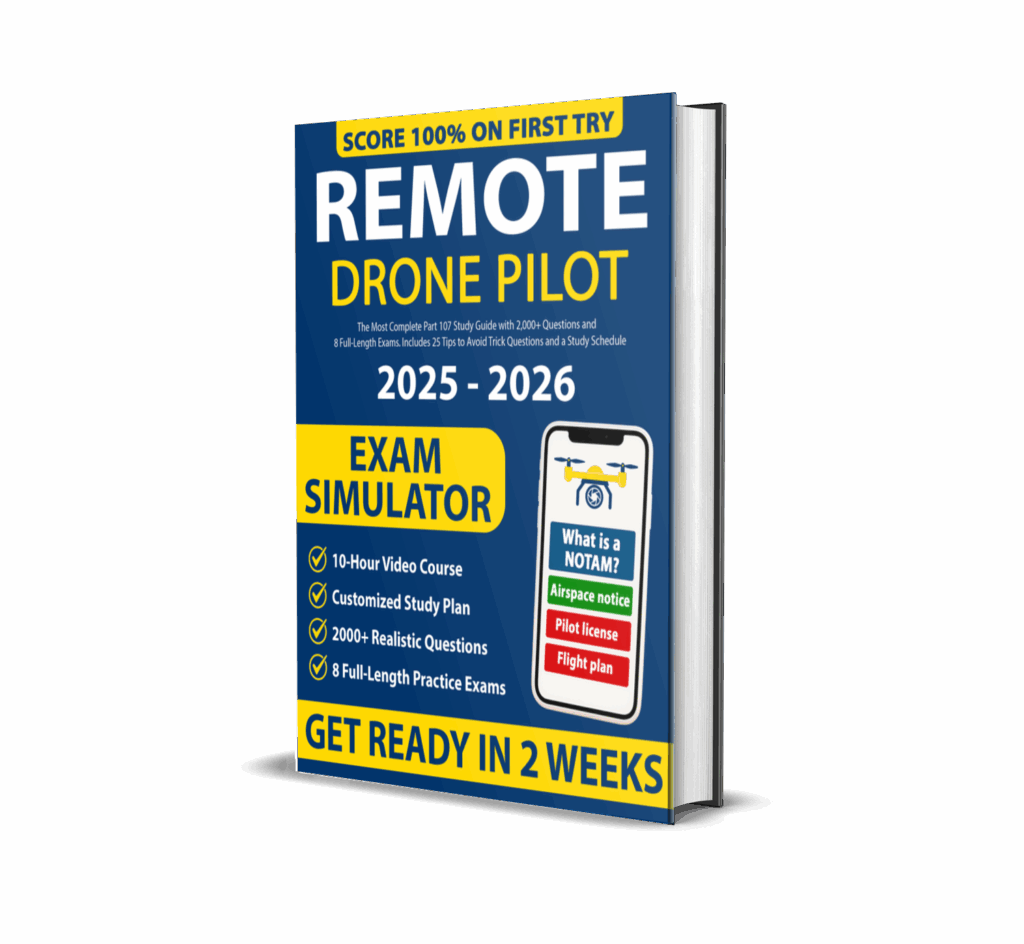
ARE YOU READY?
LET’S PRACTICE!
#1. To operate under Part 107, the maximum allowable altitude for a drone is:
#2. To fly a drone commercially in the U.S., you must:
#3. To fly a drone commercially in the U.S., you must:
#4. To fly a drone commercially in the U.S., you must:
#5. To fly a drone commercially in the U.S., you must:
#6. To operate under Part 107, the maximum allowable altitude for a drone is:
#7. To fly a drone commercially in the U.S., you must:
#8. To fly a drone commercially in the U.S., you must:
#9. To fly a drone commercially in the U.S., you must:
#10. To operate under Part 107, the maximum allowable altitude for a drone is:
#11. To fly a drone commercially in the U.S., you must:
#12. To operate under Part 107, the maximum allowable altitude for a drone is:
#13. When flying over people, which drone category allows operation?
#14. What is the minimum visibility required to fly under Part 107?
#15. What is the minimum visibility required to fly under Part 107?
#16. What is the minimum visibility required to fly under Part 107?
#17. What is the minimum visibility required to fly under Part 107?
#18. What is the minimum visibility required to fly under Part 107?
#19. When flying over people, which drone category allows operation?
#20. What is the minimum visibility required to fly under Part 107?
#21. What is the minimum visibility required to fly under Part 107?
#22. When flying over people, which drone category allows operation?
#23. What is the minimum visibility required to fly under Part 107?
#24. What is the minimum visibility required to fly under Part 107?
#25. When flying over people, which drone category allows operation?
#26. When flying over people, which drone category allows operation?
#27. When flying over people, which drone category allows operation?
#28. When flying over people, which drone category allows operation?
#29. When flying over people, which drone category allows operation?
#30. What is the minimum visibility required to fly under Part 107?
#31. What is the minimum visibility required to fly under Part 107?
#32. When flying over people, which drone category allows operation?
#33. What is the minimum visibility required to fly under Part 107?
#34. When flying over people, which drone category allows operation?
#35. When flying over people, which drone category allows operation?
#36. When flying over people, which drone category allows operation?
#37. What class of airspace surrounds most major airports?
#38. To fly in Class B airspace under Part 107, you must:
#39. What class of airspace surrounds most major airports?
#40. What class of airspace surrounds most major airports?
#41. What class of airspace surrounds most major airports?
#42. To fly in Class B airspace under Part 107, you must:
#43. What class of airspace surrounds most major airports?
#44. To fly in Class B airspace under Part 107, you must:
#45. To fly in Class B airspace under Part 107, you must:
#46. To fly in Class B airspace under Part 107, you must:
#47. What class of airspace surrounds most major airports?
#48. To fly in Class B airspace under Part 107, you must:
#49. A remote pilot suffering from dehydration may experience:
#50. What does a METAR report provide?
#51. A remote pilot suffering from dehydration may experience:
#52. A remote pilot suffering from dehydration may experience:
#53. What does a METAR report provide?
#54. What does a METAR report provide?
#55. What does a METAR report provide?
#56. A remote pilot suffering from dehydration may experience:
#57. A remote pilot suffering from dehydration may experience:
#58. A remote pilot suffering from dehydration may experience:
#59. A remote pilot suffering from dehydration may experience:
#60. What does a METAR report provide?


